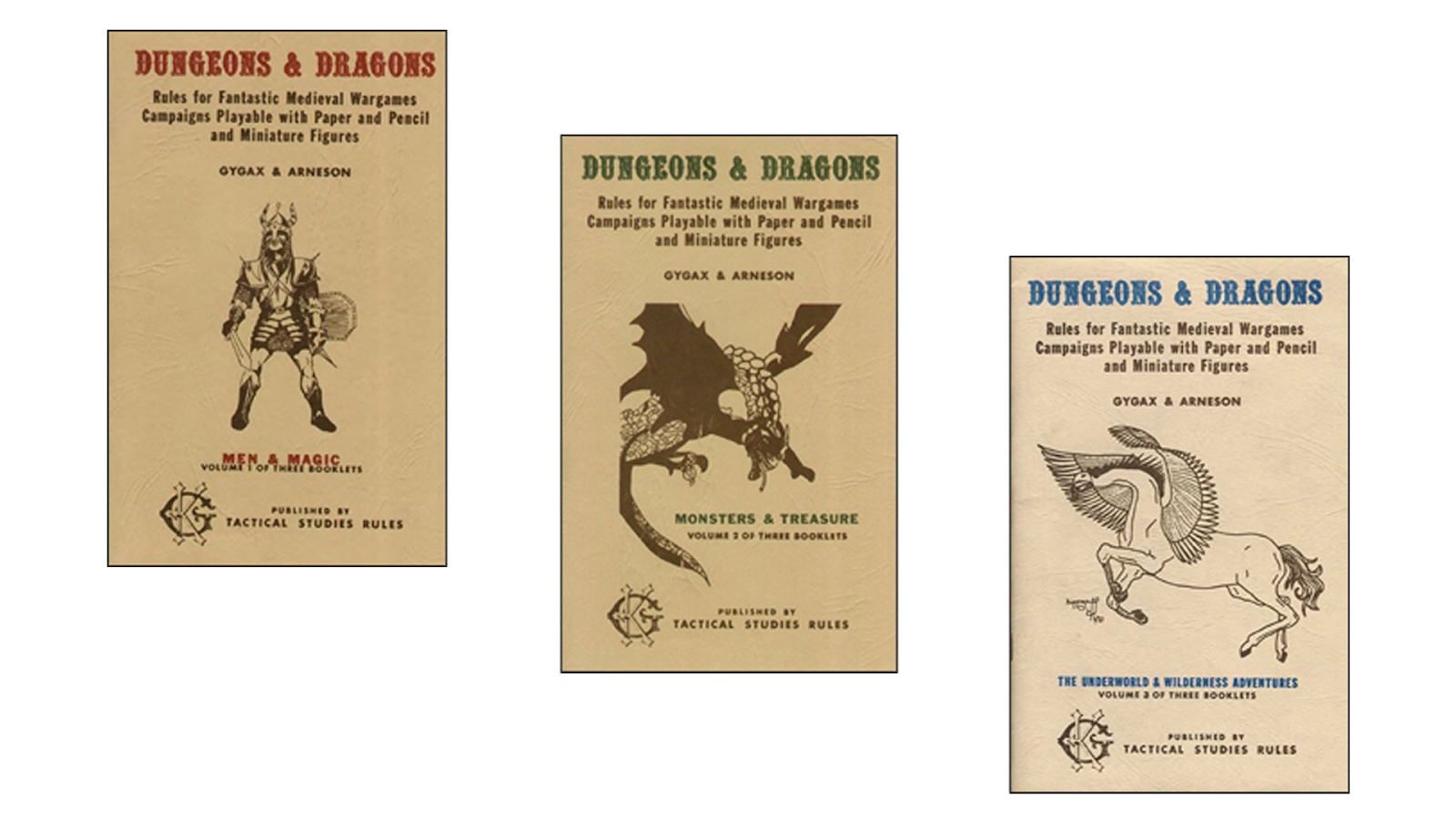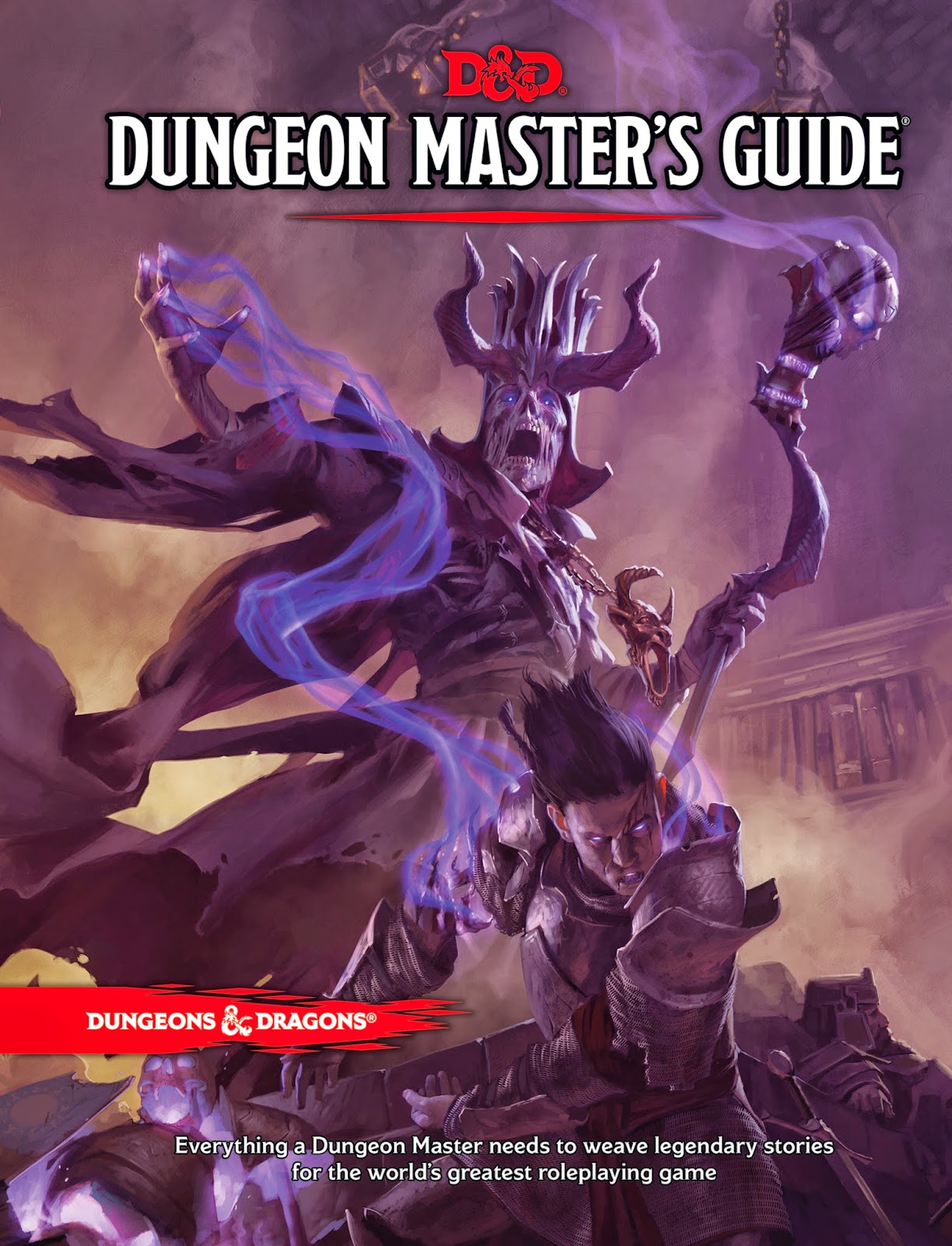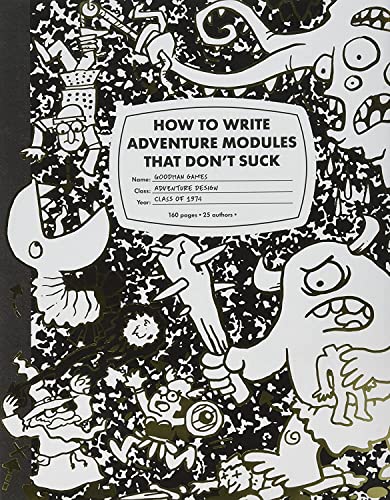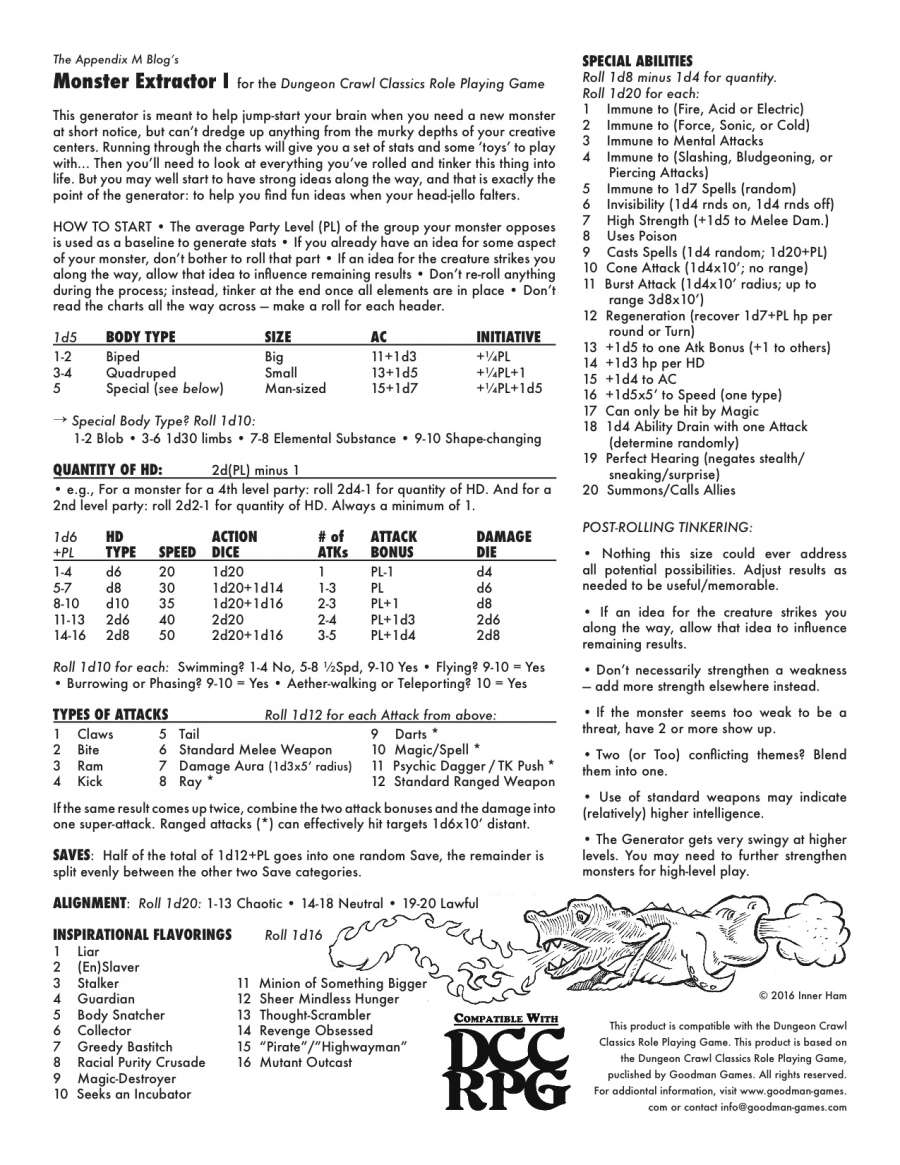At MSP, we've only published one product so far, the Advanced Character Sheets for the DCC RPG, but we plan to publish more, including adventures, in the near future. In the meantime, here's a post about some of the most important design/inspiration products that have served as starting points and building blocks in our process as of May 2024.
General Resources
-The Dungeon Crawl Classics RPG rulebook: Of course!
-The original Dungeons & Dragons boxed set: Having learned an actually readable version of old-school RPG rules in the DCC RPG, it's time to go back to the beginning. Know your foundations, and be prepared to take notes!
-The 1981 Basic/Expert (B/X) restatement of the basic D&D rules. Very similar rules to the three original booklets from 1974 but better-organized and with a smattering of additions from the original D&D rules supplements (Books IV-VII). Still, it would've been great for the original publisher, TSR, to have combined both volumes into one prior to the bloated Rules Cyclopedia (which also incorporated the lengthy and arguably unnecessary Companion, Master, and Immortals rules), but maybe that's what Labyrinth Lord and Old-School Essentials are for.
-The AD&D Dungeon Masters Guide, First Edition: It's filled to the brim with adventure design treasures, a true legend. You'll also need the Monster Manual for stats and descriptions unless you want to make up your own.
With just the above books, you already have more than enough to jump in and create amazing adventures. Here are some additional resources that are more topic-specific:
-Artifices, Deceptions, & Dilemmas: Courtney C. Campbell's Empty Rooms, Tricks, and Basic Trap Design is a great resource, and this work combines that info with even more great stuff for an extremely usable and inspiring design aid.
-The Big List of RPG Plots: Many OSR players feel that exploration/setting >>> plot, but when you need help navigating plot tropes, this is a handy aid, similar to a condensed version of TVTropes.org.
-Cities by Midkemia Press: It gets into a level of detail you may or may not go for in your games, but it's a great starting point for developing your towns and cities.
-The Wilderness Alphabet: Another useful "alphabet" product, less glamorous than "Dungeon" but solid.
-The Grimtooth's Traps series: On the one hand, these design aids do offer a lot of content. On the other hand, many of the traps are overly lethal and therefore of limited use in a game situation. Also, the tone of the writing, particularly the relishing of elaborate, improbable violence is more on the juvenile-edgelord side. (It's supposed to be written from Grimtooth the Troll's POV, but still, it's overdone.) Nevertheless, there some useful trap and design ideas in here if you can stomach the somewhat cringeworthy and grating presentation.
-The Random Esoteric Creature Generator: Briefer and more focused than the Metamorphica and also very useful for creating original and unique monsters.
-Random Fungi: Various tables on a wide variety of subjects. Give it a chance as there's a lot to like (and use) here.
-The DCC Monster Extractors: There are five of these, each themed differently, and they're great for coming up with usable, non-generic monsters.
-Tegel Manor: After Palace of the Vampire Queen, this is perhaps the second-best module of all time, and it's due to the same stripped-down design that makes it incredibly easy to digest on the fly when Judging. Is it a somewhat haphazard "monster condo," with all kinds of crazy stuff thrown in without rhyme or reason? Yes. Is it a good example of sensible "dungeon ecology"? No. And it's great!
-Wilderlands of High Fantasy: Part module and part Dungeon Master's Guide, WHF is an amazing resource that's chock full of amazing tables and other design aids intended to help Judges develop their wilderness campaigns on the fly. Incredible stuff. Frontier Forts of Kelnore is another one in this vein.
-The Wilderness Survival Guide: A companion piece to the Dungeoneer's Survival Guide above, it likewise has some rules you might never use, but it also a lot of general wilderness ideas that should help get your creativity moving.
-The Campaign Hexagon System: This Judge's Guild product, along with associated products such as Castles, Caves and Caverns, Temples, and Villages, really hit the nail on the head in terms of following out the stated D&D rules and instructions into the development of actually usable game products. Recall that D&D originally was just a set of rule descriptions and design instructions with no concrete examples of what you'd actually get if you actually tried to make something using them. Now, enter Judge's Guild, who actually built the things described by D&D, and now you see what they look like. Definitely worth a look, with tons of usable tables, too.
So, there's a brief overview of the books we hit up for tables and ideas on a regular basis and that have expanded our background knowledge of the world of classic TTRPGs and TTRPG design. In the coming weeks, we'll post reviews and more extended discussions of some of the items in the list.






































No comments:
Post a Comment